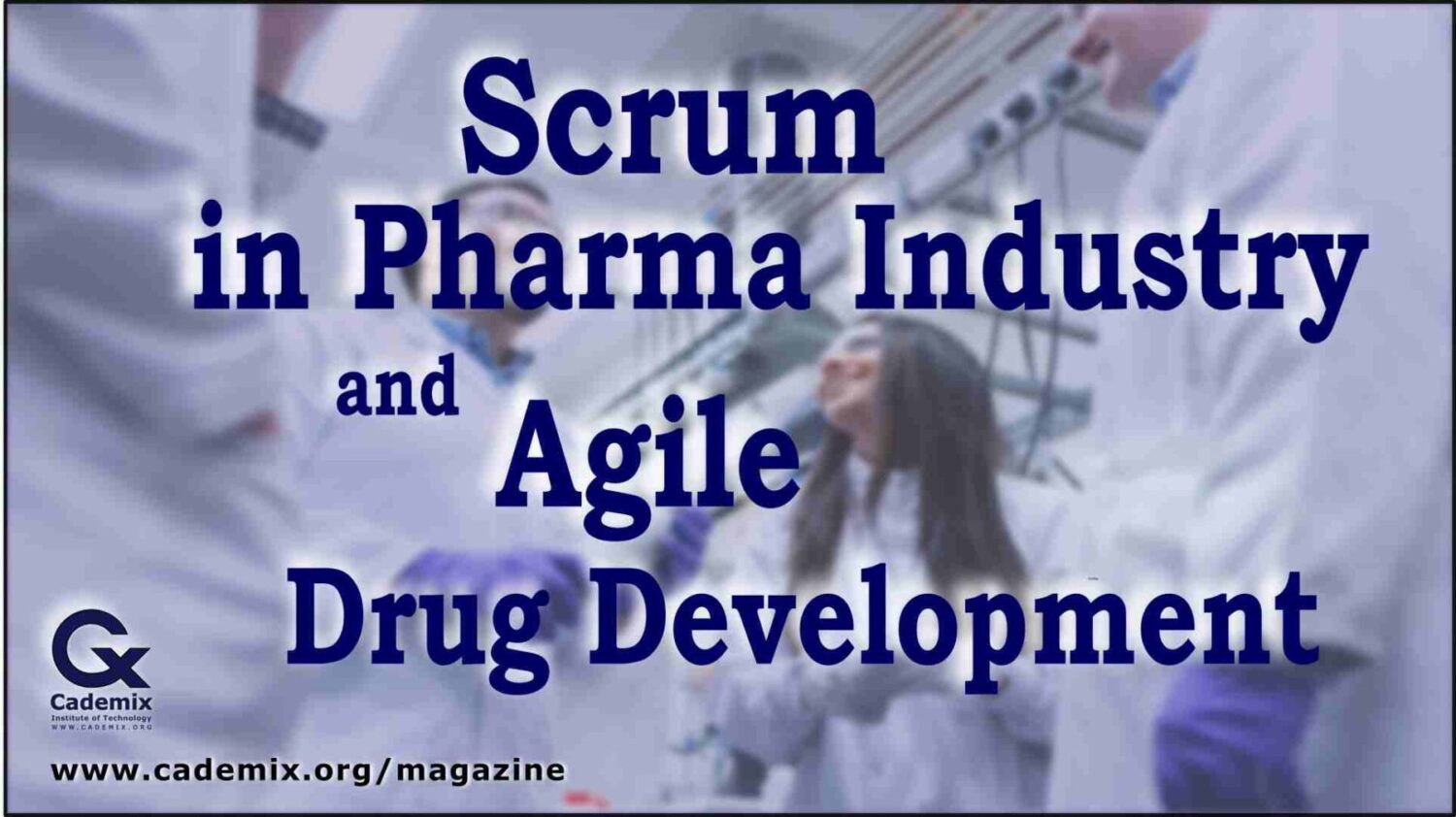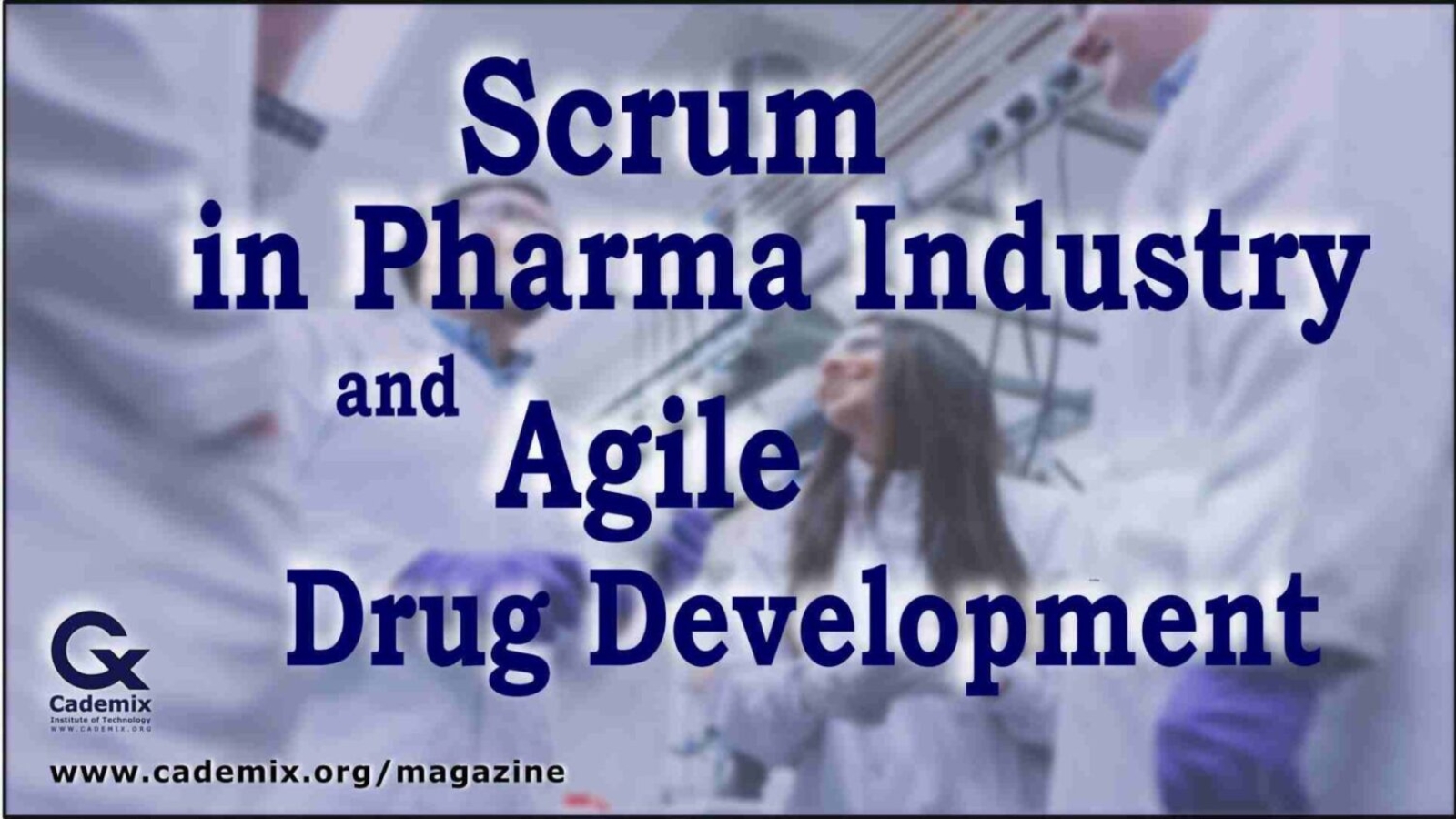
The Pharma sector should consider implementing Agile workflows in its management approach to overcome hindrances and meet the health challenges of tomorrow.
By Karima Aboukal, R&D Project Assistant, Cademix Institute of Technology
The world is going through considerable change. This year has been a challenge on organizations, industries, and institutions of all kinds.
Amidst the global COVID-19 pandemic, the main focus of Pharma industries, the medical community, and regulatory bodies, is to act in urgency to ensure a potential treatment whether it is a drug aimed at fighting the virus or a vaccine.
The drug development process is expected to produce fast results without compromising the quality. As a result, many questions arise regarding the current operating model of drug development, clinical trials, and regulatory requirements.
Questions related to the suitability and agility of the current industry procedures and processes, which haven’t been revisited for decades, to cope with accelerating changes.
And how the implementation of new technology, such as artificial intelligence and data-driven smart analytics, can be leveraged to accelerate clinical R&D and bring drugs to the market more rapidly.
Scrum Model In Pharma Industries and its Benefits
From the discovery of the molecule to marketing and its sale in pharmacies, a drug goes through a complex and highly regulated process. It usually spans about 10 to 15 years.
The agile Scrum method is the most popular of the agile methods.
If you are unfamiliar with the word Scrum, it is a methodology applied in Agile project management. It highlights collaboration, autonomy, interdisciplinary integration/cross-functional teams, and flexibility. It is based on fractioning the project into units of time, called Sprints.
As for the meetings, they are short and quick, called Daily Scrums. They are arranged during each sprint where all members of the project give an update on their work. As a result, it facilitates communication and coordination. Each sprint will result in the delivery of an element potentially deliverable to the user. This helps increase the end value of the product.
Each sprint ends with a Retrospective in which the whole team shares feedback and discusses possible improvements for the next sprint.
It is a non-linear process as opposed to the “waterfall” approach, which focuses on following a strict sequence of activities.
The waterfall-type methodology is linear and does not give way to unforeseen events and changes. As a result, project teams find themselves confronted with the tunnel effect. By the time they notice problems or that the product does not (or no longer) meet expectations, it is already too late. This also goes hand in hand with an over-budget or late delivery.

Pharma industries are heavily regulated, highly complex, dependent on multidisciplinary teams, and typically delivers late and over-budget. They are facing several challenges in today’s world. The customer expectations are consistently rising, and the culture management is hindering much needed changes.
Therefore, on the road to Agility, Pharma industries need to shift from a “Waterfall” to a “Scrum” model.
As the pharmaceutical sector is now starting to board digitalization and slowly integrates cutting-edge digital technologies to meet the health challenges of tomorrow, it should also consider implementing change in its management approach. Agile ways of working are proving that they can help pharma companies overcome hindrances and unlock their full potential through digitalization, market speed, and customer focus.
Patient/Customer Focus
With the introduction of Agile, care quality constitutes the primary priority. The emphasis is on enhancing the patient experience.
Pharmaceutical companies have entered a new era where it is no longer just a matter of developing drugs, antibiotics, or vaccines but of placing patients right at the heart of the care process by supporting them at each stage of their treatment. Monitoring the advancement of medical treatments in real-time, organizing patient communities to help them cope better with their disease, are all strategies that will allow pharmaceutical organizations to provide complete healthcare service solutions. It is the key to transforming the pharma industry.
Market speed
The transition to Agile would also allow the R&D teams to be flexible. One of the advantages of Agile methods is the continuous integration of verification throughout development. While R&D teams work on a centered line of action, they could easily react to any changes that could arise at a later stage without causing the entire process to fall apart.
In other words, at the end of each delivery cycle, each element is directly tested. It allows to carry out possible corrective actions immediately.
Agile Drug Development in Pharma
R&D Operating model is encouraged to change towards Agility. Agile in Pharma promotes faster decision making, cross-functional teams, and a collaborative approach.
Consider a German chemicals company that adopted the agile principle of rapid iterations with early customer involvement in its R&D process. This new approach allowed it to increase its R&D productivity by 20% by either discontinuing projects or pivoting them in new directions early in the process (Alessandro Di Fiore, 2019).
Challenges of implementing Agile in Pharma
Despite the numerous benefits, the entry of new methodologies into this field faces several obstacles due to the specifics and regulated nature of this industry. Implementing an Agile approach involves frequent modification and process changes at both the technical and managerial levels.
Some of the critical challenges facing the implementation of Agile in the Pharmaceutical R&D sector are:
Rigid and tight development models
There is a risk-averse mindset among professionals in the industry, which is important to work in a volatile environment such as pharmaceuticals (long delivery pipelines, high investments, and a higher risk of failures).
Self-organized teams
A self-organized team, centered and synchronized on the same goals, is important to efficiently complete a project. However, R&D teams in pharma companies are typically accustomed to operating in a rigid and sequential manner. The flexibility of the Agile approach, in the early stages, can be disorienting to them.
Complex data
There’s a surge of data across the entire clinical R&D value chain that is a combination of pre-clinical, clinical, supply, and regulatory data. The problem is that such diverse types of data continuously increase, fragmented, and lack actionable insight. As a result, a large proportion of time and resources is allocated to perform administrative work of evaluating trial data. Therefore, the workload assigned to promote innovation and creativity is considerably lower.
Possible useful ways to overcome these challenges
To optimize clinical trials, customize treatments, support patients, reduce R&D timeline and costs, it is recommended to:
Get the project member’s roles right
Be transparent about who makes the decision, who performs the tasks, and who contributes expertise. It makes projects run much quicker and easier. It also helps to avoid any overlaps and silos.
The key role that is most forgotten though is the User Representative(s) who take on the voice of the user. You need this person on the core team to ask the difficult questions such as ‘Has anyone actually spoken about this to a customer?’. Depending on the project, these roles may not be full time, but they are all important roles (Osmond, 2019).
Outsource research and development process
Pharmaceutical companies are increasingly outsourcing research activities to academic and private contract research organizations (CROs) as a strategy to stay competitive and flexible in a world of exponentially growing knowledge, increasingly sophisticated technologies and an unstable economic environment (Buvailo, 2020).
In order to increase the success rate of drug discovery programs and decrease R&D costs, pharmaceutical companies seek to improve and accelerate every stage of early drug discovery process. To achieve these goals, drug researchers has turned to new areas in science to develop better in vitro, in vivo, and in silico methods and models. In most cases, it is cheaper and more efficient to outsource those technologies from external organizations, than it is to create in-house infrastructure and hire all the necessary research staff (Buvailo, 2020)
Implement Business process management and Lean process improvement
Implementing Business process management to gain efficiency and implementing Lean process improvement to eliminate non-value adding activities.
R&D is a fundamental value driver. By reviewing processes, multidisciplinary teams can be formed within the organization, with representation from all areas of the value chain. This process overview enables the development of an innovative transformation program that incorporates newly designed processes and tools, new ways of working, a consolidated IT infrastructure and an outsourcing strategy. This way allows for better identification and resolution of development resource issues, reduce cycle times, improve cost-effectiveness and raise customer satisfaction without sacrificing quality (Tecwyn Hill, 2018).
Implement Big Data
In the health-care and pharmaceutical industries, data growth is generated from several sources, including the R&D process itself, retailers, patients, and caregivers. Effectively utilizing all available data will help pharmaceutical companies better identify new potential drug candidates and develop them into effective, approved and reimbursed medicines rapidly (Jamie Cattell, 2013).
Employ new technology and real-time data analysis
Leveraging technology using artificial intelligence, machine learning, and big data can enable automated data collection and analysis. Ultimately, the goal is that the time and cost of the drug development cycle would decrease by retrospective and real-time analysis of all the data collected during clinical trials. It will make the process more efficient and agile.
Adaptive clinical trial design
Adaptive design moves away from the traditional phase I–III categories and allows within a single protocol the ability to move between what would be the normal divides between the phases in clinical trials. In drug and vaccine development the use of adaptive design shortens product development time and therefore is very cost-effective for industry (Lang, 2011).
Conclusion
The heavily regulated Pharma industry with its strict requirements and processes is facing strong pressure to accelerate the development phase. As a consequence, this puts interest on Agile practices and their implementation in this industry. It leads to better and faster performance and reduces regulatory delays.
Related Keywords
Agile manifesto, Backlog, Iterative, Product owner, Agile teams, Agile methodologies, User-stories, Scrum Master, Stakeholder, Product Backlog, Iterative, Agile Process, Incremental, Business Value
References
Alessandro Di Fiore, K. W. (2019, November 04). Why Science-Driven companies should use Agile. Consulté le September 20, 2020, sur Harvard Business Review: https://hbr.org/2019/11/why-science-driven-companies-should-use-agile
Buvailo, A. (2020, January 13). Pharma R&D Outsourcing is on the rise. Consulté le September 23, 2020, sur BiopharmaTrend.com: https://www.biopharmatrend.com/post/30-pharma-rd-outsourcing-is-on-the-rise/
Jamie Cattell, S. C. (2013, April 01). How Big Data can revolutionize pharmaceutical R&D. Consulté le September 21, 2020, sur McKinsey & Company: https://www.mckinsey.com/industries/pharmaceuticals-and-medical-products/our-insights/how-big-data-can-revolutionize-pharmaceutical-r-and-d
Lang, T. (2011, December 01). Adaptive Trial Design: Could We Use This Approach to Improve Clinical Trials in the Field of Global Health? The American Journal of Tropical Medicine and Hygiene, Volume 85, Issue 6, 967-970. Consulté le September 21, 2020
Osmond, N. (2019, August 5). A guide to implementing Agile in Pharma. Consulté le September 22, 2020, sur Pharmafield: https://pharmafield.co.uk/in_depth/a-guide-to-implementing-agile-in-pharma/
Tecwyn Hill. (2018, September 25). Process Management in the Pharmaceutical Industry. Consulté le September 23, 2020, sur SIGNAVIO: https://www.signavio.com/post/process-management-in-the-pharmaceutical-industry/#:~:text=The%20substantial%20benefits%20of%20process%20management%20in%20the%20pharmaceutical%20industry&text=After%20all%2C%20pharma%20companies%20must,and%20partners%20acros

